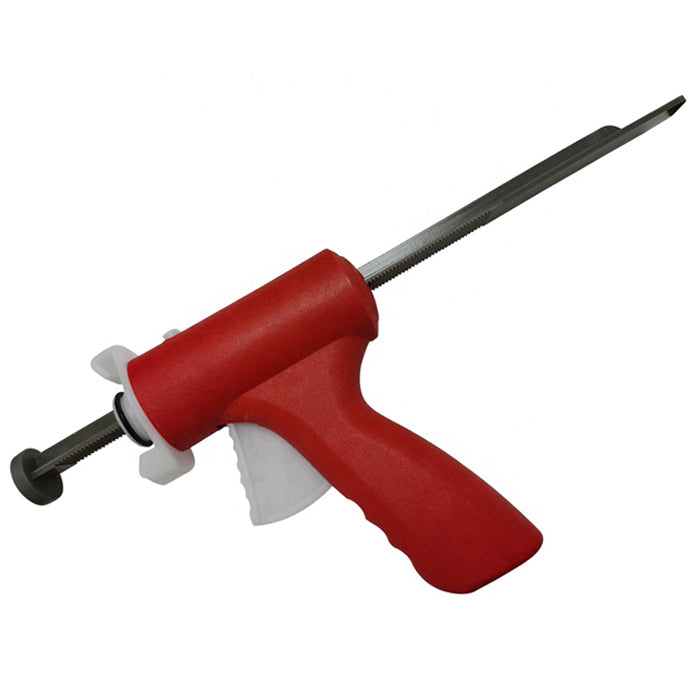Dispensing guns serve as indispensable tools across multiple industries, offering precision and control in the application of various substances. From adhesives and sealants to caulks and lubricants, these devices streamline processes, ensuring accurate dispensing for both professional and DIY applications.

Design and Functionality
Dispensing guns are typically handheld devices designed with ergonomics in mind. They consist of a handle or trigger mechanism connected to a cartridge or container holding the substance to be dispensed. The key components include:
- Handle/Trigger Mechanism: This part of the gun allows the user to control the dispensing process. By pressing or squeezing the trigger, the substance is released through the gun's nozzle or applicator tip.
- Cartridge/Container: Dispensing guns accommodate cartridges or containers specific to the material being dispensed. These can range in size and are easily replaceable once the substance is depleted.
- Nozzle/Applicator Tip: The nozzle or tip attached to the gun determines the dispensing pattern and precision. Different tips cater to various applications, from fine lines to broader spreads, offering versatility in use.
Applications Across Industries
- Construction and Manufacturing: In construction, dispensing guns are extensively used for applying adhesives, sealants, and caulks. They ensure precise application, whether sealing gaps, bonding materials, or securing fixtures.
- Automotive Repairs: Automotive professionals rely on dispensing guns for applying adhesives and sealants during repairs. These tools help maintain the integrity of repairs and ensure proper bonding of vehicle components.
- DIY Projects: For hobbyists and DIY enthusiasts, dispensing guns simplify tasks like home repairs, crafts, and maintenance projects. From applying glue precisely to sealing cracks, these guns offer ease and accuracy.
Types of Dispensing Guns
- Manual Guns: These are operated by hand, where the user controls the dispensing process by applying pressure on the trigger or handle. Manual guns are versatile and cost-effective for occasional use.
- Pneumatic Guns: Powered by compressed air, pneumatic dispensing guns offer consistent and controlled dispensing. They are commonly used in high-volume production settings due to their efficiency and precision.
- Battery-Powered Guns: These guns offer portability and ease of use by eliminating the need for air compressors or cords. They provide consistent dispensing while being more maneuverable compared to pneumatic options.
Choosing the Right Gun
Selecting the appropriate dispensing gun depends on several factors:
- Material Compatibility: Ensure the gun is compatible with the substance you intend to dispense. Different guns are designed for specific materials.
- Application Needs: Consider the dispensing volume, accuracy, and pattern required for your application. Different nozzles or tips cater to various dispensing needs.
- Frequency of Use: For frequent use, investing in a durable, higher-end model might be beneficial, while occasional users may opt for more affordable options.
Maintenance and Care
Proper maintenance of dispensing guns is crucial for their longevity and optimal performance. Cleaning the gun after each use, storing it appropriately, and following manufacturer recommendations for maintenance are essential practices.
In Conclusion
Dispensing guns are versatile tools that streamline material application across various industries and applications. From construction sites to DIY projects, these guns offer precision, control, and efficiency in dispensing adhesives, sealants, and other substances. Choosing the right gun based on material compatibility, application needs, and frequency of use ensures optimal results, making these tools a valuable asset in many professional and personal endeavors.
